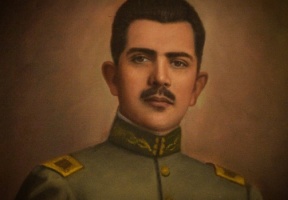MEXICAN INDEPENDENCE DAY SPECIAL ISSUE
By Daniel Nardini
 When Mexico became an independent country in 1821, one of two things that had eluded the country for a long time was stability and providing a stake, an outlet for the people in the future of their country. Mexico had stable government during brief periods of its history after independence, and one of the reasons why the Mexican Revolution occurred was due to the fact that the ordinary people did not have any stake, any representation in the government that ruled them. The revolution had produced one important thing, the Constitution of 1917 that at least had provided a blueprint for the rights and a legal framework for how the country should govern itself. This document provided a chance for all future administrations to run the country in a more stable manner.
When Mexico became an independent country in 1821, one of two things that had eluded the country for a long time was stability and providing a stake, an outlet for the people in the future of their country. Mexico had stable government during brief periods of its history after independence, and one of the reasons why the Mexican Revolution occurred was due to the fact that the ordinary people did not have any stake, any representation in the government that ruled them. The revolution had produced one important thing, the Constitution of 1917 that at least had provided a blueprint for the rights and a legal framework for how the country should govern itself. This document provided a chance for all future administrations to run the country in a more stable manner.
Like any constitutional process, it takes the will and ability of those people put into office to try and make that constitutional process work. After the Mexican Revolution, former Mexican General Alvaro Obregon had given Mexico social and political stability, but little else. Although president from 1920 to 1924, he pushed a change in the Constitution to give him a second term. Before he could take up a second term he was assassinated by Jose de Leon Toral. Obregon was succeeded by another former Mexican general named Plutarco Elias Calles, who ruled as president from 1924 until for all due purposes 1934. Callas was more a dictator than a president. The most notable thing under his presidency was the founding of the Institutional Revolutionary Party—the institution that would govern Mexico from 1929 until the election of 2000. His handpicked successor was yet another general from the revolution named Lazaro Cardenas.
Cardenas at first seemed more like a puppet for Callas. While Cardenas was the actual president, Callas ruled the country from his “retirement.” However, Cardenas proved to be truly independent of Callas, and made sure that Callas stayed in retirement and no longer interfered in the government after 1935. From there, Cardenas worked hard to improve the condition of the country. He had an extensive road network built, and he constructed more public schools than had ever been done since the end of the Mexican Revolution. He nationalized the oil industry and put it under the government corporation Pemex so that the government had a more reliable source of revenue. Just as important, Cardenas broke up the large land estates that belonged either to the Catholic Church or to the powerful landowners and gave the land to small farmers. He helped encourage the building of labor unions in return for the unions providing workers’ support for his government, and Cardenas also contributed government funds for large-scale industrialization throughout the country. This, in turn, drove unemployment down and helped to build Mexico’s middle class.
The article is from the Lawndale News
The article is from the Lawndale News
No comments:
Post a Comment